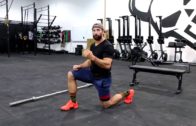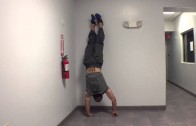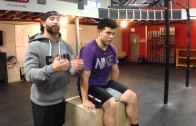WODdoc Episode 321 Project365: Balance and Symmetry; Shoulder Horizontal Balance
I mentioned yesterday that what we were doing was important but made it a point to say that we were only finding one piece of the puzzle. Today we are finding another. In the end we will try and take this pieces and see if we can make some sense out of them.
Examining qualities of the shoulder in the horizontal plane is a nice gauge because there is no reality advantage (due to changing the shoulder position as an example) for pushing or pulling.
Today’s WODdocket:
1. Find your Max Effort Push-up ability
2. Find your Max Effort Horizontal Ring Rows (and don’t turn them into kipping chin pike whatevers)
Ideally these two numbers would be very similar but the vast majority of us will have a smaller value for our rows (pulling strength is in the crapper). Why?! because our activities of daily living cause underdevelopment of back musculature and when we do develop our back (in the gym) its done to look flashy at the beach, not functionality. Introduce a sport like crossfit (which is dominated by pulling movements) and it not surprising that we start getting a little crook in the shoulder blade.
3. Take the smaller value of the two you tested from above and divide it by the larger one. Then multiply by 100. This will give you a value in percentage for the deficient movement.
Examples:
1. Push-up = 50 Row = 10 10/50 = .2 x 100 = 20% — In this example your pulling capacity is 20% your pushing = BAD
2. Push-up = 15 Row = 40 15/40 = .375 x 100 = 37.5% — In this example your pushing capacity is 37.5% or your pulling = butte then the first example but could improve.
3. Push-up = 50 Row = 45 45/50 = .9 x 100 = 90% — This is a really good example and would be something to strive toward.





